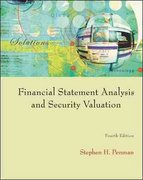Q ALA finishing department of Standard Tool Company. Bill Sawyer, the manager of the finishing department, knows exactly what he is doing. In each of the three years he has managed the department, the cost per unit of product transferred out of his Work in Process Inventory account has declined. His ability to control cost is highly valued, and it is widely believed that he will be the successor to the plant manager, who is being promoted to manufacturing vice president. One more good year would surely seal the deal for Mr. Sawyer. It was little wonder that Ms. Alverez was uncomfortable in challenging Mr. Sawyer's estimate of the percentage of completion of the department's ending inventory. He contended that the inventory was 60 percent complete, but she believed that it was only about 40 percent complete After a brief altercation, Ms. Alverez agreed to sign off on Mr. Sawyer's estimate. The truth was that although she believed she was right, she did not know how to support her position. Besides, Mr. Sawyer was about to be named plant manager, and she felt it unwise to challenge such an important person. The department had beginning inventory of 5,500 units of product and it started 94,500 units during the period. It transferred out 90,000 units during the period. Total transferred-in and production cost for the period was $902,400. This amount included the cost in beginning inventory plus additional costs incurred during the period. The target (standard) cost per unit is $9.45. Required a. Determine the equivalent cost per unit, assuming that the ending inventory is considered to be 40 percent complete. b. Determine the equivalent cost per unit, assuming that the ending inventory is considered to be 60 percent complete. c. Comment on Mr. Sawyer's motives for establishing the percentage of completion at 60 percent rather than 40 percent. d. Assuming that Ms. Alverez is a certified management accountant, would informing the chief accountant of her dispute with Mr. Sawyer violate the confidentiality standards of ethical professional practice in & Exhibit 1.17 of Chapter 1? e. Did Ms. Alverez violate any of the standards of ethical professional practice in Exhibit 1.17 of & Chapter 1? If so, which ones? f. Discuss the components of the fraud triangle that affected Ms. Alverez's behavior. eXcel







